#nandi the bull
Text
Went to the Dallas Art Museum this weekend with my partner Kyle and there's a Hindu exhibit there! I honestly can't explain how happy I was to see carvings/statues of Lord Shiva, Durga, Ganesha, Pavarti, & others I didn't know! I felt such a warmth & welcome from them, especially Shiva and Ganesha.
Over the past few months, I have felt a pull to Goddess Khali again like I did in 2020. Ganesha has also appeared in my meditations as he did long ago. But Lord Shiva is new!🤭 I've been getting a lot of art of him on Pinterest lately, and he appeared in a meditation I did for the past full moon along with Khali and Ganesha.💜
I have not felt such a loving tug from a deity in the long time, and Shiva did that at the museum.💜
When I saw the Shiva statue of him dancing from across the hall, I don't know exactly how to describe it but I "felt" rather than heard a whisper of "Come see me, Hannah!"
I even remember seeing the statue & thinking "Shiva?" Second guessing myself, and feeling a playful response of "Hannah?" 🤭
This was art museum but I still felt like the urge to leave offerings of thanks to the statues and burn incense for them.💜 It was amazing and I feel so happy and a warmth of love from Shiva and Ganesha I haven't felt since first finding Thor or Loki all of those years ago. 💜🕉
I wish Tumblr let me share more than 10 images per post lol
The first photo is of the statue of Shiva I saw from across the room. Next is Goddess Durga, then Durga again, Nandi the Bull the mount of Lord Shiva, and Lord Ganesha!🕉🕉🕉




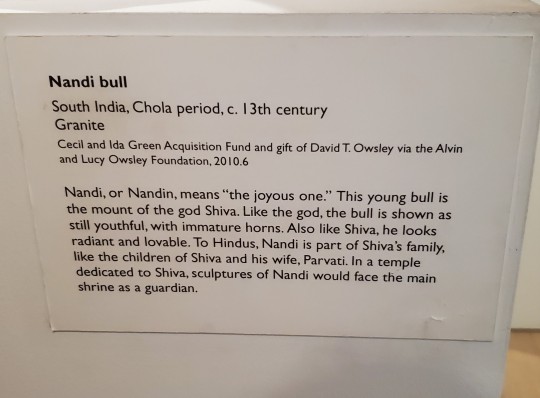

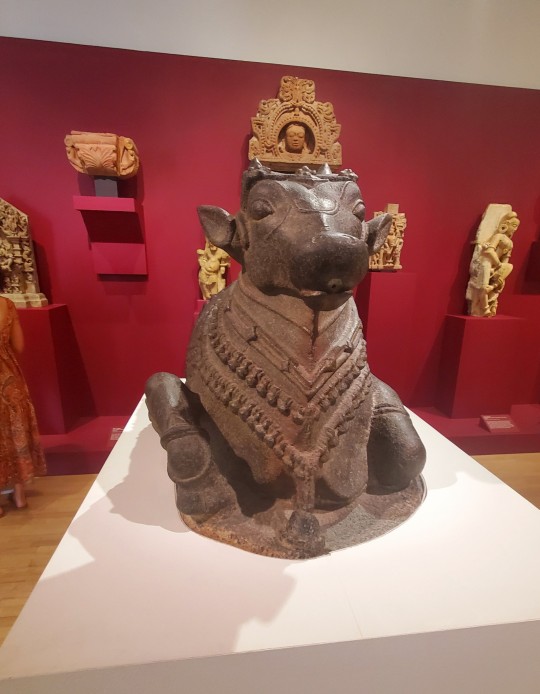
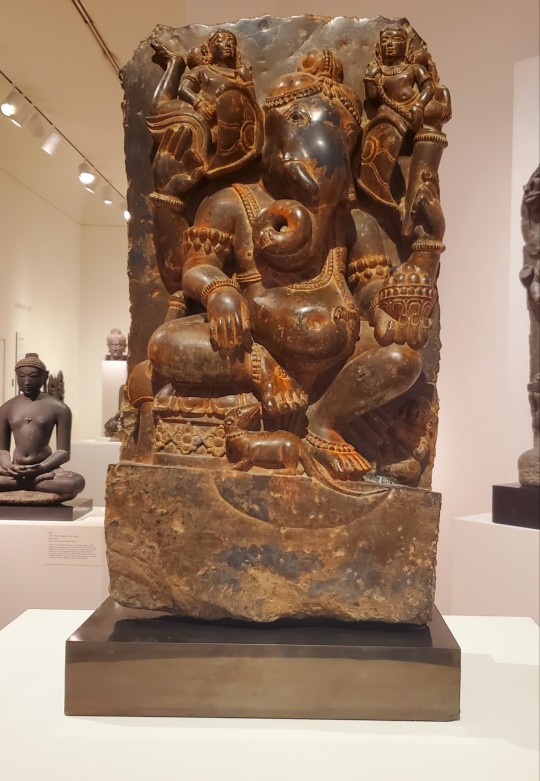
@angelixgutz @ariel-seagull-wings @professorlehnsherr-almashy
8 notes
·
View notes
Text
Hi, I'm Marigold, here's some of my art, including several self-portraits!
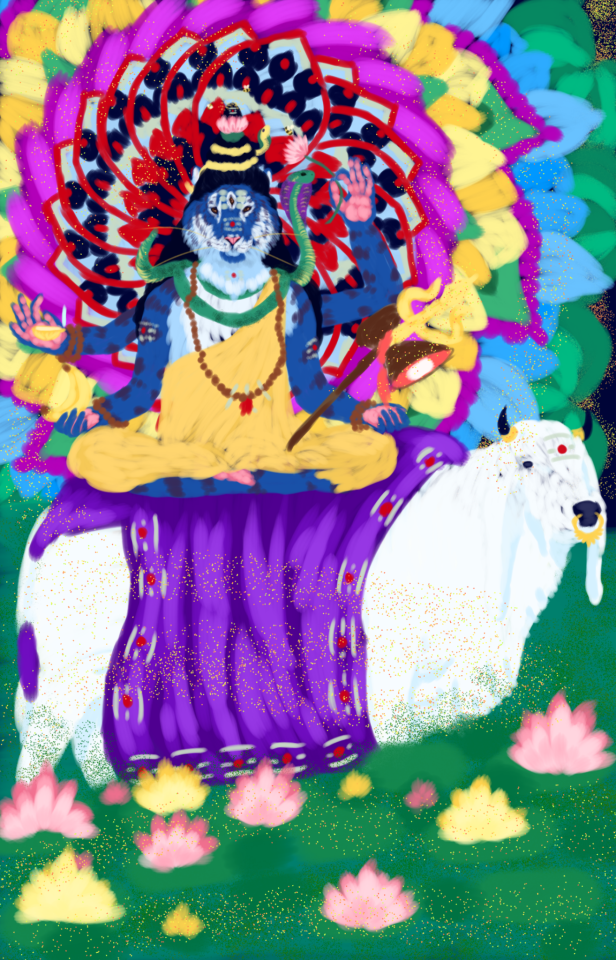
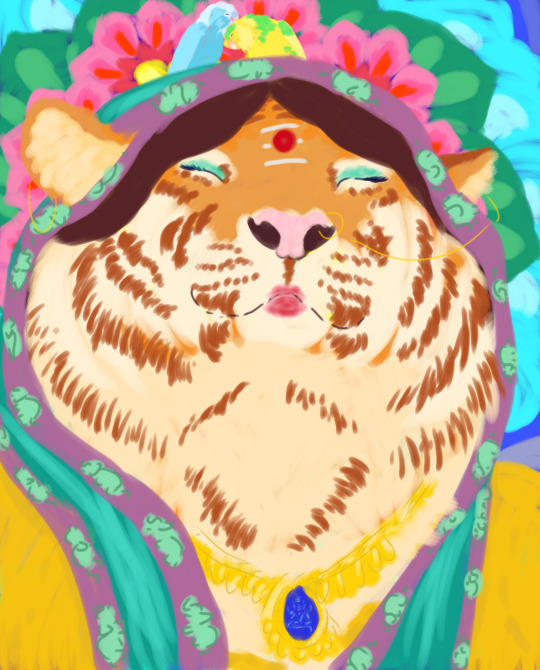
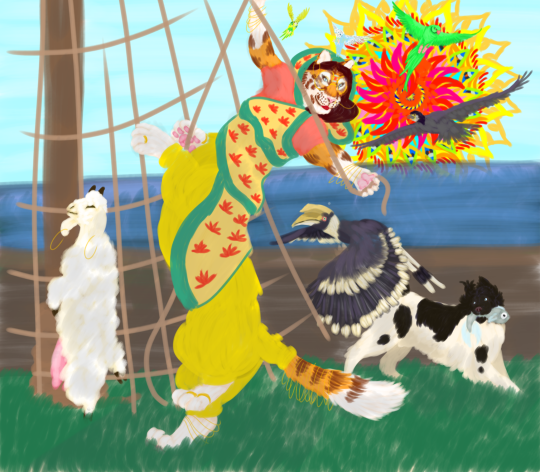
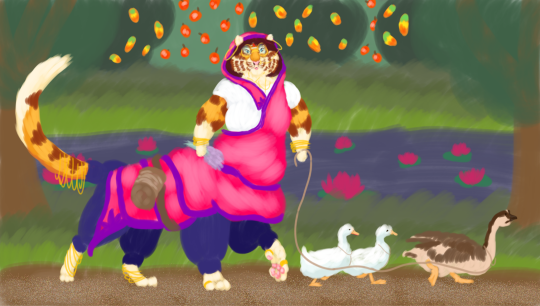
#shiva#nandi#bull nandi#tiger#maltese#Maltese tiger#gold#golden tabby#golden tabby tiger#golden tabby tigress#tigertaur#taur#taur furry#art#artists on tumblr#digital artist#small artist#artist for hire#artist for commission#oc artist#dm for commissions#hinduism#hindu#Shaivite#shaivism#hindu art#hindu mythology#hindu artists#hindu artist
8 notes
·
View notes
Text
Hello friends 👋
Today it's Bail Pola

On this day, we celebrate a festival dedicated to the bulls and oxen 🐂 by being thankful for their contributions to agricultural fields.
On this day, bulls are given bath from their horn to the tails. Then their horns are colored. After which, the rope in their neck are replaced with Decorative bells.
Bulls are given rest on this day and they are worshipped.
And So, Happy Bail Pola to you all ☺ 🐂

#devotional#bullish#nandi#shiva#krishna#hindu rituals#hindufestival#hinduism#pola#bull#vedic rituals#farm#inspiration#youtube#hindu gods
2 notes
·
View notes
Photo
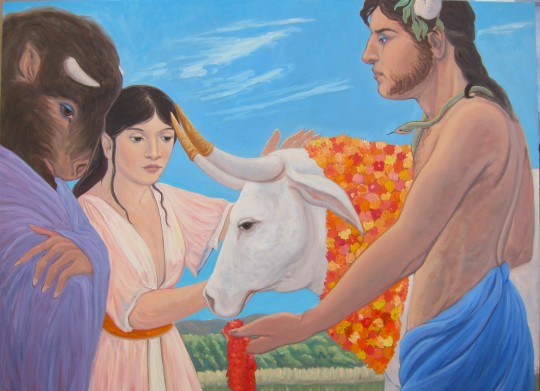




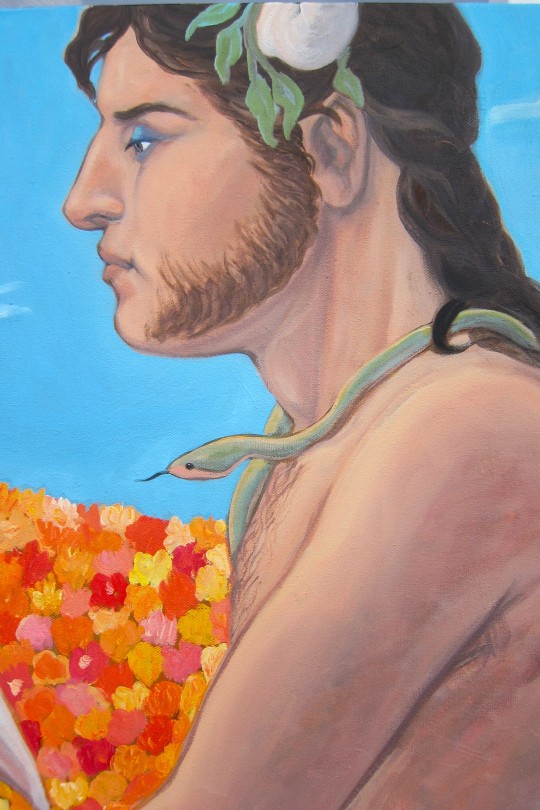
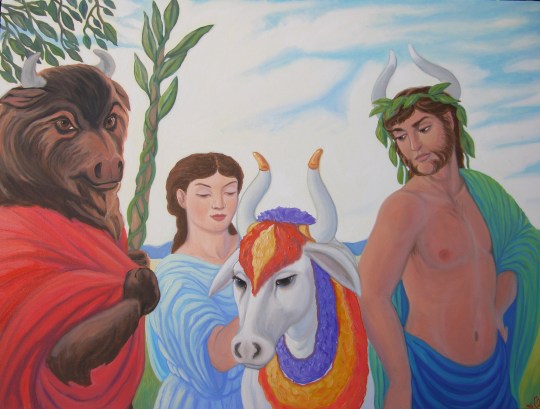
Finished the replacement version of Ariadne and the Sacred Bulls: Ferdinand the Minotaur, Nandi, and Dionysus the Bull-Horned One. The original, which is also part of this post, has a large tear in it on Dionysus’ garment. I had intended to have it as part of my art show in May, but now it won’t.
30″ x 40″ oil painting
#minotaur#ferdinand the minotaur#nandi#ariadne#dionysus#sacred bulls#maria aragon#oil painting#mythology
28 notes
·
View notes
Text
Get a Tattoo of The Grand Alpha Bull - The Vahan of Lord Shiva himself.
#nandi#bull#Tattoo#tattoobangalore#best tattoo artist in bangalore#eternalexpression#best tattoo studio in bangalore
0 notes
Text
Unveiling the Mystique: Exploring the Sacred Significance of Nandi, the Divine Bull

Many people in today's world know Nandi as the bull in front of Lord Shiva. Nandi Devar was also called Vahanam or vehicle of Lord Shiva. Nandi can withstand the three-eye power of Lord Shiva. He is also known as the closest abode and personal bodyguard of Lord Shiva. He is an expert in playing drums and plays an important role during Pradosham (a sacred time to pray to Lord Shiva). But there are always two faces to a coin. Did you ever think that Nandi is a Bull, a Man, or even a Bull man?
In this article, we are going to discuss who Nandi is, what he has done, and how he became a close abode of Lord Shiva.
Interesting Notes: It is believed that “During Pradosham, Shiva dances in the head of Nandi”.
Who Is Nandi?
We cannot be sure about the past. But ancient scripts from the great sage Agathiyar say that “Nandi is one ancestor of the Siddha way of life and the guru of Ashta (8) Siddhas, which includes Patanjali Siddhar.” So, it is clear that Nandi is one of the Siddhars who attained supreme power and reached Lord Shiva himself.
"Nandham" in Tamil means growing love and a person who is always happy. So, it is clear that Nandi is a Siddhar who has growing love towards Lord Shiva and is always happy.
Interesting Notes: Nandi is called Adhikara Nandhi, which means a person who has supreme power over all devotees of Shiva.
Early Life Of Nandi Devar:
Once there lived a Siddhar called Silathamunivar and his wife Chitravathi who were without children. So, Silathamunivar prayed to Lord Shiva for a son. Shiva said, "You will find a baby in the forest, adopt him, and raise him as your son." One day Silathamuniar found Nandi as a baby in the forest. He named him Nandi and educated him with dharma & other scriptures.
Interesting Notes: It is believed that “Nandi married Suyamprabha (granddaughter of Vashistar) also known as Kundalini.”
Devotion For Shiva:
During Nandi’s seventh birthday, an old sage told Silathamunivar that his son would die. So, Silathamunivar asked Nandi to meditate on Lord Shiva. Nandi meditated on Lord Shiva for months, and finally, Shiva appeared in front of him and asked what he wanted. He said, “Nandi says that he wants to meditate on his name throughout his life.” Shiva was happy that Nandi didn’t ask for eternal life but wanted his blessing for meditation. Shiva makes Nandi one of his sons and personal bodyguards.
Interesting Facts: Lord Shiva is prayed to not only by humans but also by all species.
Conclusion:
Nandi Devar is known for his teaching of alchemy and medicines. He is a direct disciple of Lord Shiva and learned from him. He is one of the ancestors who taught the Siddha way of life. His life taught us that with growing love for God, we can attain the destiny of our life. Sivayanama - Mandirams depiction is Nandi Devar.
Interesting Notes: It is believed that “To get the blessing of Lord Nandi, you should donate food during the Pradosham period.
#knowledge#learning#life#siddha#spiritual#Siddha#sitthar#Nandhi#Bull god#enlighten#Nandhi devar#Nandi
0 notes
Text
Explore the Spiritual Marvels of The Chaurasi Temple Complex in Bharmour
Himachal Pradesh, often hailed as Devbhoomi, the land of Gods, boasts a rich mythological past and is home to numerous temples that attract devotees from across the globe. Nestled in the heart of this divine landscape is Bharmour, a region known for its beautiful and ancient temples dating back to the 7th century AD.
Among these sacred shrines, the Chaurasi Temple Complex stands out as a…

View On WordPress
#7th century AD#84 temples#Bhai Dooj#bharmour#chamunda devi#Chaurasi Temple Bharmour#Chitragupta#Dharamraj#Lakshana Mata#Lord Ganesha#Lord Hanuman#Lord Nandi Bull#Lord Narsimha#Lord Shiva#Lord Yamraj#Sheetla Mata#Shri 108 Jai Krishan Ji Giri (Naga Baba)#Swami Kartikeya
0 notes
Text

0 notes
Video
youtube
Kole Basava Ancient Folk Tradition Of Karnataka ಕೋಲೆ ಬಸವ Mysore
#youtube#Kole Basava#Ancient Folk Art#Folk Art Of Karnataka#Ancient South Indian Tradition#Decorated Bull#Bull#Taken To Houses#IHindu Custom#Folk Art#Bull Worshipped As Nandi#KoleBasava In Mysore
0 notes
Photo
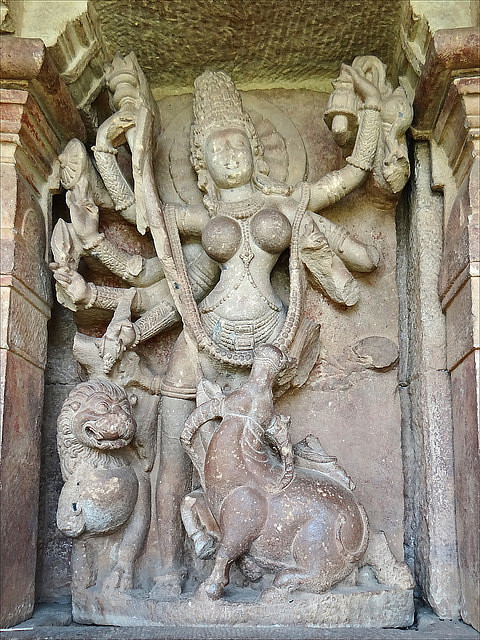
Devi
Devi, also known as Mahadevi or 'Great Goddess', is an all-embracing Mother Goddess first worshipped in India in Prehistoric times. In the Vedic period, she was assimilated into the Hindu pantheon and so came to represent the female energy or Sakti (Power) of her husband Shiva. Both Devi (meaning goddess in Sanskrit) and Sakti may also be used more generically to reference any female Hindu goddess, especially Parvati, Lakshmi, and Sarasvati. Devi is most often manifested as the fearsome female warriors Durga and Kali, both of whom famously killed a number of terrible demons in Hindu mythology. Devi is also the mother of Nandi, Shiva's doorkeeper and bull; Skanda, the six-headed god; and Ganesha, the elephant-headed god.
Devi's character has two opposing sides represented by various separate female deities: as Uma, the benevolent, and as Durga, the terrible. It is as the latter, more fierce personification that she is most frequently worshipped. Her dark side can also take the form of the fearsome black goddess Kali. The deity has a myriad of many other names and may, for example, also be referred to as Vindhyavasini, Kanya (the Virgin), Mahamaya (the Illusion), and Bhutanayaki, the queen of the Bhuta, those ghosts and goblins who haunt graveyards, make the dead live again, and trick the living so that they might feast on their flesh.
The Two Sides of Devi: Uma & Durga
Devi's more benevolent side is worshipped as Uma, and this facet of her character is represented as both beauty and light. This softer side is also referred to as Jaganmata (Mother of the World), Gauri (Yellow and Brilliant or Golden), Bhavani, Haimvati, and Parvati (the Mountaineer).
Devi's dark side is represented as the terrible Durga (the Inaccessible) who has ten arms, an impressive armoury of weapons, and who rides a magnificent lion or tiger. This side is further manifested in the forms of Kali, Kalika or Syama (the Black Goddess); Candi or Candika (the Fierce), in which guise she killed many a demon or asura; and Bhairavi (the Terrible). Worshippers of this face of Devi seek her favours and dark powers and so make blood sacrifices and perform wild rituals in the ceremonies of Durga-puja, Carak-puja, and the Tantrikas which call on Durga's sexual and magical powers.
Continue reading...
72 notes
·
View notes
Text

Page 8: Shiva and Parvati Riding on Nandi Bull
unknown artist
Wellcome Collection
53 notes
·
View notes
Text

Jatadhara 'Shiva'
God Shiva is called ‘Jatadhara’, which means who has heap of matted hair on the head.Shiva is reverred as Vyomakesha, which means that His hair is like Sky (Vyoma means Sky and Kesha is hair).Shiva, the Ascetic Yogi is beyond the worldly affairs. So, He doesn't have to maintain his hair.When Holy river Ganga had to descend to Earth, no one except Shiva had the power to withstand the mighty Ganga River. Shiva received Ganga in his matted locks ( hair ) and released her, from His hair in seven streams. Thus Shiva became Gangadhara.The God who has the River Ganga on his head, does He need to maintain His hair!
Ganga Jatadhara Gowri Shankara Girija Mantra:
Ganga Jatadhara Gowri Shankara Girija Mano Ramana
Jaya Mruthyunjaya Mahadeva Maheshwara Mangala Shubha Charana
Nandi Vahana Naga Bhooshana
Nirupama Guna Sadana
Natana Manohara Neelakanta Sai
Neeraja Dala Nayana
Glory to Lord Shankara, who bears the Holy Ganges in His hair and whose consort is Goddess Girija, born of the mountains. Glory to the One, who is the Lord of Lords and who has conquered death and whose Feet confer auspiciousness. Glory to the One who rides the bull, Nandi. Glory to the One who has a cobra around His neck. Glory to the One who is the embodiment of unparalleled virtues. Hail the enchanting dancer, the blue-throated Shiva who is none other than Sai and whose eyes are like the petals of the lotus.
Har Har Mahadev!!!
32 notes
·
View notes
Text
Uttara Phalguni - The Fearless Knight

Degrees: 26°40 Leo to 10°00 Virgo
Deities: Aryaman, God of patronage; Nandi, Shiva's sacred bull, the devotional worshipper.
Vimshottari Lord: Sun
Sounds: टे te, टो to, पा pa, पी pi
The core meaning: you are endowed with passion and courage. You do not hesitate to channel this strong energy into just causes. You fight, you support, you analyze very well with your peers. When a gigantic enemy stands in your way and everybody gives up, you stay and go for it. Sometimes, your passion may entangle you in unhealthy amorous adventures and you will regret it deeply. Because you are an Uttara Phalguni native: making the right moral choice is what makes you thrive. Nothing else.
Qualities: responsible, analytical, quick-thinking, courageous, insightful, hard working, charismatic, supportive.
Affliction: overindulgent, inflexible, nervous, immoral, stubbornness, critical, restless, resentful.
Interest in humanitarian/environmental/animal causes, counseling, music, research.
#astrology#vedic astrology#jyotish#nakshatras#sidereal astrology#uttara phalguni#uttara phalguni nakshatra#leo#virgo
35 notes
·
View notes
Text

Bull, Possibly God Shiva’s Mount, Nandi
Indonesia, 9th century
20 notes
·
View notes
Text

"After Aurangzeb attacked Kashi, his army moved towards Kedarnath to destroy the Jyotir Linga. After the first stroke of attack on the Nandi deity, a swarm of cows and bulls smothered his army."
The Nandi deity in Kedarnath is actually Shiva in disguise. The Pandavas wanted to atone for the sins committed during the Kurukshetra war. Thus, they handed over the reins of their kingdom to their kin and left in search of Lord Shiva to seek his blessings. But Shiva wanted to avoid them and assumed the form of a bull (Nandi) and disappeared into the ground.
9 notes
·
View notes
